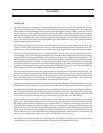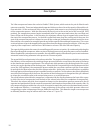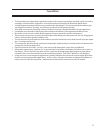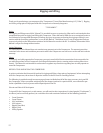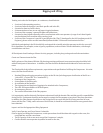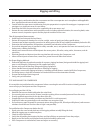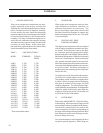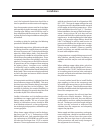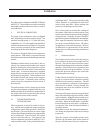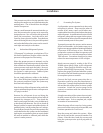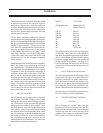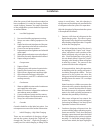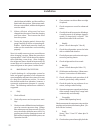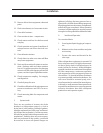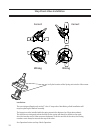
17
Installation
used, the horizontal dimensions should be as
short as possible to avoid excessive oil trapping.
Lines for ammonia systems must be of steel pipe
with specially designed ammonia service ttings.
Common pipe ttings must NEVER be used as
they will not provide the same service. Steel pipe
is generally used in large installations when joints
are welded.
In making up joints for steel pipe, the following
procedures should be followed:
For threaded connections, all threads on the pipe
and tting should be carefully cleaned to remove
all traces of grease or oil. Threads should then be
wiped dry with a lintless cloth. Only thread ll-
ing compounds suitable for refrigeration service
should be used for making steel pipe joints. These
compounds should be used sparingly, and on the
pipe only. Do not put any on the rst two threads
to prevent any of the compound from entering
the piping system. Acetylene or arc welding
is frequently used in making steel pipe joints,
however, only a skilled welder should attempt this
kind of work. Take care to see no foreign materials
are left in the pipes and remove all burrs formed
when cutting pipe.
It is important to avoid short, rigid pipe lines that
do not allow any degree of exibility. This must
be done to prevent vibration being transmitted
through the pipe lines to the buildings. One
method of providing the needed exibility to
absorb the vibration is to provide long lines that
are broken by 90° Ells in three directions.
Smaller Halocarbon and Hydroflourocarbon
installations use copper pipes with solder type
ttings where possible. The use of screw type
ttings in Halocarbon systems should be held
to an absolute minimum, as these refrigerants,
due to their physical properties, will leak through
screw type joints.
When drawn copper tubing is used for Halocar-
bon lines, type “K” or “L” conforming to ASTM
B88 should be used. Soft annealed copper tub-
ing conforming to ASTM B280 can also be used
for tube sizes not larger than 1-3/8” in outside
diameter. These requirements are in accordance
with the mechanical code for refrigeration ANSI
B9.1-1971. The type of copper tubing to be used
for a given pressure is dependent on the strength
of the copper at the design temperature. Some
local codes forbid the use of Type “L”. Therefore,
before installation, be sure to check local require-
ments. Never use type “M” as it does not have
adequate wall thickness to withstand the operat-
ing pressures. In selecting ttings for Halocarbon
piping, only wrought copper ttings should be
used. Cast ttings as used for water service are
porous and will allow the refrigerant to escape.
Note this exception: In larger pipe sizes, wrought
fittings are not available. However, specially
tested cast ttings are available and these may
be used with complete safety.
In larger pipe sizes, wrought ttings are not avail-
able. However, specially tested cast ttings are
available and these may be used with complete
safety.
When soldering copper tubing joints, only silver
solder should be used for Refrigerant-22 service.
Soft solder such as “50-50” should never be used,
as its melting point is too low, lacks mechanical
strength, and tends to break down chemically in
the presence of moisture.
A second method would be to install exible
pipe couplings as close to the compressor unit
as possible with connections run in two different
directions, 90° apart. These exible connections
should be installed on both the high and low side
lines of the compressor unit.
Hangers and supports for coils and pipe lines
should receive careful attention. During pro-
longed operation of the coils, they may become
coated with ice and frost, adding extra weight to
the coil. The hangers must have ample strength
and be securely anchored to withstand the
vibration from the compressor and adequately
support the pipe lines.
Water supply and drain connections, and equip-
ment using water, should be installed so all the
water may be drained from the system after
the plant has been shut down in cold weather.
These precautions will avoid costly damage to
the equipment due to freezing.



